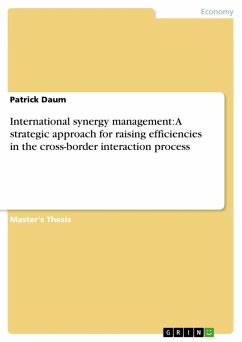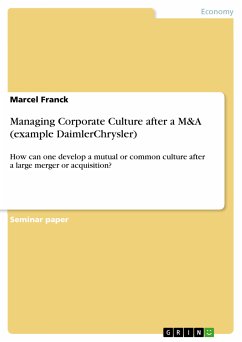Seminar paper from the year 2006 in the subject Business economics - Business Management, Corporate Governance, grade: 1,0, California State University, Fullerton, course: International Management, language: English, abstract: On 6 May 1998, Daimler-Benz of Germany signed a merger agreement with Chrysler Corporation of the United States. The merger marked the beginning of the ambitious goal of merging two styles of auto-making, two approaches to business and the proud, but distinct cultures of two nations. The opportunities for significant synergies afforded by a combination based on factors such as shared technologies, distribution, purchasing and know-how. Daimler’s engineering skill and technological advances could be complemented by Chrysler’s skills for innovation, speed in product development and bold marketing style. Juergen Schrempp, CEO of DaimlerChrysler, said, that the new company will reach an eminent strategic position in the global marketplace by combining and utilizing each other’s strengths. It seems that Germans and Americans in the enterprise have not become closer since the merger. This paper explores the reasons for DaimlerChrysler's failure to realize the synergies identified prior to the merger. It examines the different culture and management styles of the companies that were primarily responsible for this failure. The focus will be on the cultural issues and on the different theories that try to explain cultural differences between nations – the US and Germany - and how values in the workplace are influenced by those cultures. First of all it describes the overall circumstances that led to the merger. Both companies and their conditions prior to the merger are introduced as well as the general objectives that led to the merger and the goals of it are highlighted. After that, some of the theories that try to explain cultural differences such as the Cultural Dimensions of Hofstede are introduced with a special focus on the differences between the two cultures in play, the German and the US. It will proceed with an analysis of the different corporate cultures and the accompanying communication difficulties and mistakes that have been done in this context. The paper will conclude with recent developments, the current situation of DaimlerChrysler and some recommendations to work on the existing cultural issues and other problems within the merged company.








